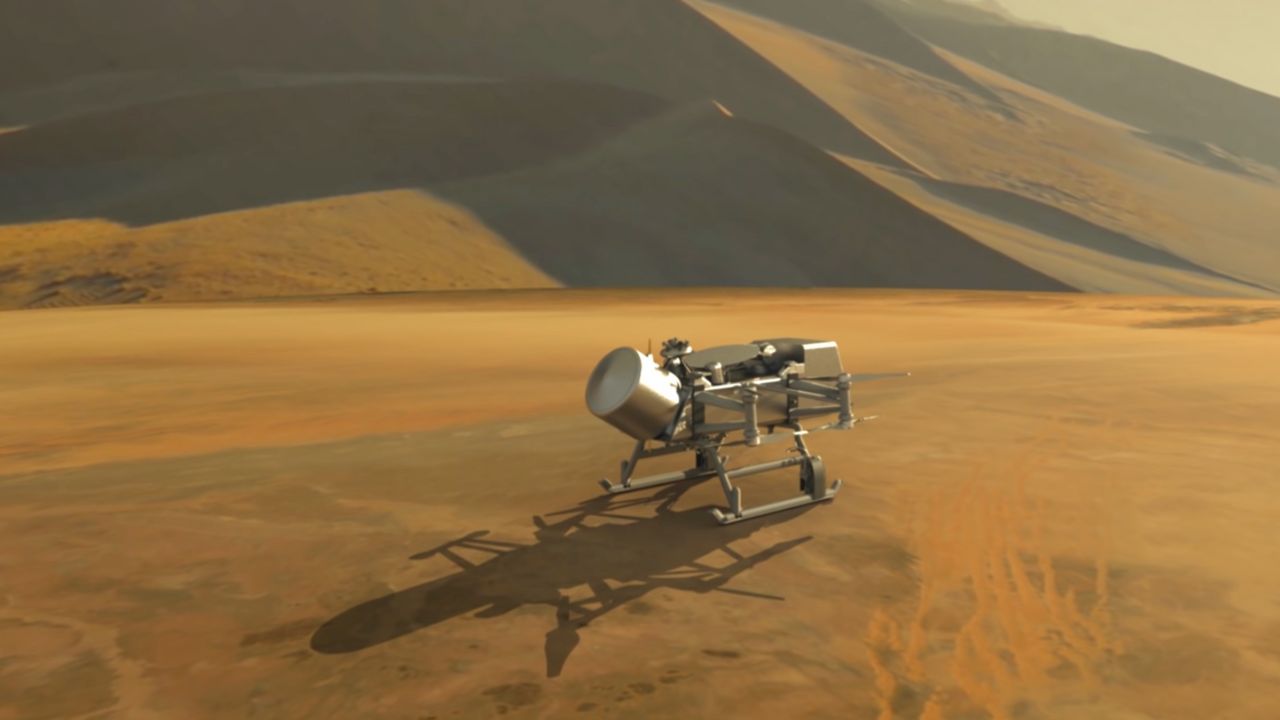After overcoming the hurdles of COVID-19 delays and budget overruns, NASA has finally given the Dragonfly rotorcraft mission the go-ahead. This autonomously-operated nuclear-powered rotorcraft is set to embark on a groundbreaking journey to Saturn’s largest moon, Titan, in 2028.

Why Titan?
Titan is no ordinary celestial body. Located about 746 million miles from Earth, it’s the second-largest moon in our solar system and the only one with a dense atmosphere besides Earth. But what makes Titan truly unique is its organic chemistry. With an atmosphere rich in nitrogen and methane, it’s a haven for scientists seeking to understand the building blocks of life.

Artist’s concept of Dragonfly rotorcraft (Credit: NASA/JHU-APL)

Artist’s concept of Dragonfly rotorcraft (Credit: NASA/JHU-APL)
The challenges of exploration
Titan’s swamp-like surface, composed of petroleum byproducts, poses a significant challenge for exploration. Traditional rovers won’t do here. Enter Dragonfly, a rotorcraft powered by a radio thermal generator. It flies using aluminum/titanium rotors, designed to leap across Titan’s landscape, conducting geological surveys and searching for biosignatures.

Artist’s concept of Dragonfly rotorcraft (Credit: NASA/JHU-APL)
MORE: HOW THE DREAM CHASER SPACEPLANE PLANS TO SHAKE UP SPACE TRAVEL IN THE FUTURE
Dragonfly’s quest for life
Dragonfly’s mission is to travel to multiple locations on Saturn’s moon, Titan, to uncover signs of life. The spacecraft will scrutinize the surface and just beneath it, searching for organic compounds and life indicators. Equipped with a neutron spectrometer, a drilling mechanism, and a mass spectrometer, Dragonfly will enable researchers to analyze Titan’s complex organic chemistry extensively.

Artist’s concept of Dragonfly rotorcraft (Credit: NASA/JHU-APL)
MORE: ARE YOU READY TO TAKE THIS CRAZY RIDE TO OUTER SPACE IN AN 8-PASSENGER LUXURY BALLOON?
The mission’s journey
Despite financial debates, the mission’s delay necessitates a more powerful rocket to ensure Dragonfly’s arrival on Titan. With a budget of $3.35 billion, the mission represents NASA’s commitment to pushing the boundaries of space exploration.
MORE: THE SMALL BUT MIGHTY HELICOPTER THAT’LL HAVE YOU RETHINKING THE WAY YOU TRAVEL IN THE FUTURE
Kurt’s key takeaways
As NASA’s Dragonfly rotorcraft prepares to take flight, it is a testament to human ingenuity and the relentless pursuit of knowledge. This mission may not only unveil the secrets of Titan but also shed light on the origins of life itself. With the world watching, Dragonfly is poised to soar into the records of space exploration history.
How do you think the Dragonfly mission’s discoveries on Titan could reshape our understanding of life in the universe? Let us know in the comments below.
TO GET MORE OF MY SECURITY ALERTS, SUBSCRIBE TO MY FREE CYBERGUY REPORT NEWSLETTER


